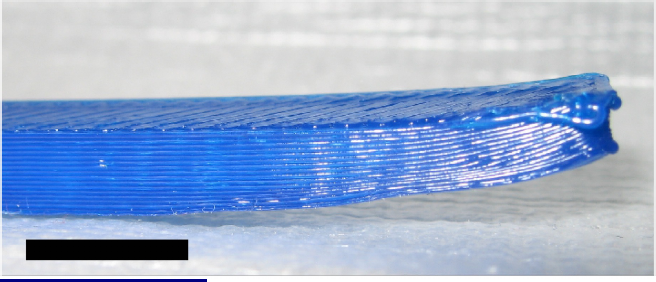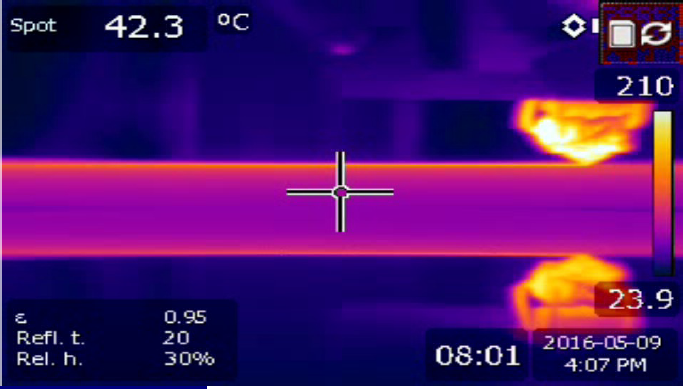In a paper entitled “Improved Model and Experimental Validation of Deformation in Fused Filament Fabrication of Poly Lactic Acid,” a group of researchers evaluates deformation in 3D printed PLA. Because PLA is mostly 3D printed with relatively small desktop 3D printers, the researchers state, not much attention has been given to the challenges that large-scale 3D printing presents. Some of these challenges include warpage or deformation, but the deformation process is not well understood.
To study deformation in PLA, the researchers 3D printed several objects using a MOST RepRap 3D printer. All objects were 3D printed using PLA without any additives. Temperature graphs of a thin vertical wall were made while printing using an infrared sensitive camera. The temperature of the pixels in the image were determined and plotted.
“The plot was divided into regions where at least one component had a linear dependence on temperature,” the researchers explain. “Those linear relations were manually fit in order to convert a pixel’s color value into a position on the scale. Because the upper and lower limits of the scale varied, and those variations were not updated immediately in the image, they also had to be determined from the image. The constant temperature background was used as a reference. The recorded temperature of the central pixel was updated immediately, and was used as the second reference. The two references were used to convert the position on the scale into a temperature.”
The thermal equation was calibrated using thermal measurements and validated by measuring curvature in 3D printed objects. Results showed that this makes the model usable for lower ambient temperatures. It is not very accurate for the first layers, but after about 9 mm it predicts deformation well. The researchers also investigated the effects of annealing. They discovered that at a temperature of 50°C, no shrinkage or crystallization takes place, but at 90ºC the rapidly crystallizes to about 20 percent crystallinity. Therefore, heated bed temperatures should be kept at 50°C or lower to avoid delamination of the PLA print.
Although the study successfully explained how the deformation of PLA is caused by the temperature gradient that builds up during the print, it did not investigate how to stop it, the researchers state. The results do include a potential solution, however.
“It involves using the model developed here, improving upon it by excluding the simplifications, and then using it to predict the exact deformation of a brick building block,” the researchers state. “Then an object must be sliced into bricks with space for mortar of the size needed to fill the expected deformation on a sealing pass. The mortar must be printed after the layer has cooled and shrunk, and would ideally be determined by the nozzle diameter of the FFF machine. Finally, the mortar tool path would need to be optimized to minimize single toolpath lengths while binding all the bricks into a single unit. Future work is necessary to test this new method of slicing to prevent fatal deformation of large-scale FFF, and how it affects the mechanical properties of the printed objects.”
Authors of the paper include Bas Wijnen, Paul Sanders and Joshua M. Pearce.
Discuss this and other 3D printing topics at 3DPrintBoard.com or share your thoughts below.



